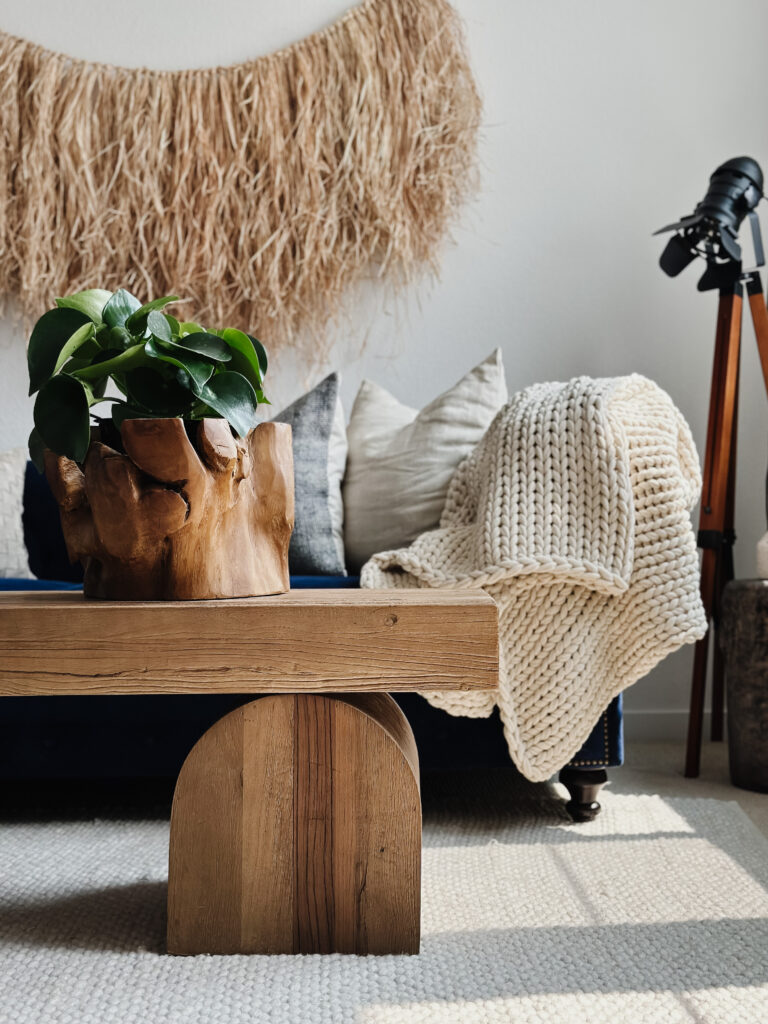Most people immediately think of colour, furniture, and layout when it comes to interior design. However, texture in interior design is one essential element that’s often overlooked but can dramatically transform a space. Incorporating various textures can add depth, interest, and personality to your interiors, making them more inviting and visually appealing. Let’s delve into the power of texture and how you can use it to elevate your home.

Understanding Texture in Interior Design
Texture in interior design refers to the surface quality of materials, whether tactile (how they feel) or visual (how they look). Texture can create contrasts, define spaces, and evoke emotional responses. The right combination of textures can make a room feel warm and cosy, sleek and modern, or anything in between.
Types of Texture
- Smooth Textures: These include materials like glass, metals, and polished wood. Smooth textures reflect light, making a space feel sleek, clean, and modern.
- Rough Textures: Examples include natural stone, brick, and coarse fabrics like burlap. Rough textures absorb light, making a room feel warm, rustic, and inviting.
- Soft Textures: Think of plush carpets, velvet cushions, and upholstered furniture. Soft textures bring a cosy, comfortable vibe to any space.
- Hard Textures: Materials like ceramic tiles, hardwood floors, and metal accents fall into this category. Hard textures add durability and structure, grounding a room.
The Benefits of Adding Texture to Your Interiors
- Adds Visual Interest: A room with various textures is inherently more interesting than one with uniform surfaces. Different textures catch the eye and invite closer inspection, keeping your interiors from appearing flat or monotonous.
- Enhances Depth and Dimension: Textures can create a sense of depth and dimension in a room. For example, textured wallpaper can make walls appear more dynamic, while a layered rug can add an extra dimension to your flooring.
- Defines Spaces: Different textures can help define separate areas within an open-plan space. For instance, a plush rug can delineate a living area, while sleek, polished tiles might mark a kitchen zone.
- Evokes Emotion: Textures can evoke specific feelings and emotions. Soft, plush textures can make a space feel cosy and relaxing, while sleek, hard textures can create a sense of modernity and efficiency.
How to Incorporate Texture in Interior Design
- Mix and Match Materials: Combining different materials is one of the easiest ways to add texture. Think of leather sofas with knitted throws, glass coffee tables on jute rugs, or wooden furniture against exposed brick walls.
- Layer Textiles: Textiles are a fantastic way to introduce texture. Layering different fabrics—such as combining silk curtains with velvet cushions and wool blankets—creates a rich, inviting atmosphere.
- Play with Finishes: Experiment with various finishes on surfaces. Glossy finishes can contrast beautifully with matte textures, while rough, natural finishes can balance out smoother surfaces.
- Use Texture in Accents: Start small with accents if you’re hesitant about committing to textured walls or furniture. Decorative pillows throws, and area rugs are excellent for adding a touch of texture without overwhelming the space.
- Incorporate Natural Elements: Natural materials inherently bring texture into a space. Wooden beams, stone countertops, and plants add texture and connect interiors with the natural world, enhancing a sense of tranquillity.
- Texture on Walls and Ceilings: Don’t forget about your walls and ceilings when considering texture. Textured wallpapers, panelling, and even ceiling beams can add an unexpected element of interest.
Practical Tips for Using Texture
- Balance is Key: While mixing textures is encouraged, be mindful of balance. Too many competing textures can make a space feel chaotic. Aim for a harmonious blend.
- Consider the Room’s Function: Soft, plush textures are perfect for bedrooms and living rooms, where comfort is a priority. In contrast, kitchens and bathrooms benefit from smoother, easier-to-clean textures.
- Use Texture to Highlight Features: Draw attention to architectural features by adding texture. A textured wall behind a bed or a textured backsplash in the kitchen can become a focal point.
Power of Texture
The power of texture in interior design cannot be overstated. By thoughtfully incorporating various textures, you can create a space that is not only visually stunning but also rich in depth and character. If you’re about to revamp your home or explore the world of interior design further, remember to weave in diverse textures for added depth and character. Start small, mix and match, and watch how texture in interior design brings your space to life. Here’s to creating spaces that tell a story – your story.
Teak & Amber specialize in Interior Design and Residential Design, catering to Colorado locales including Bloomfield, Erie, Niwot, Longmont, Westminster, Mead, and Boulder.
+ Show / Hide Comments
Share to: